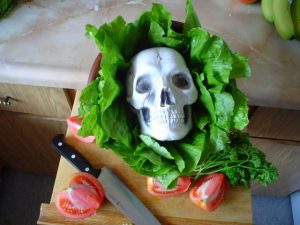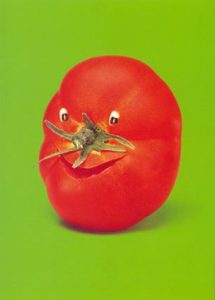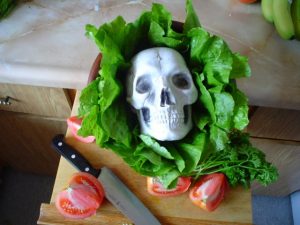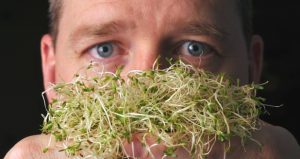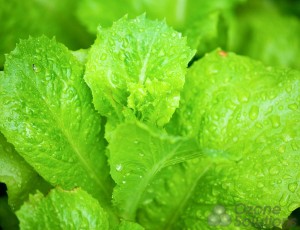When I was attempting a Masters degree (I never finished after almost three years, became a newspaper editor, then went back and got a PhD in Food Science; thanks Mansel for taking me on) looking at susceptible and resistant strains of tomato plants to Verticillium wilt, I had to inoculate these plants and walk up to the lab at all hours of the day and night to nurture and harvest the plants at prescribed times and look at their cells under a microscope – sometimes even electronic – and see what the fungus was doing.
There have been improvements in technology.
The effects of using contaminated seed and water on the persistence and internalization of Salmonella Newport in organic spinach cultivars- Lazio, Space, Emilia and Waitiki were studied.
Seeds were contaminated by either immersing in a suspension of Salmonella and then sprouted or were sprouted in Salmonella contaminated water in the dark at 25 °C. After 5 days, germinated sprouts were analyzed for S. Newport population and internalization. Germinated sprouts were potted in soil and grown in a plant incubator for 4 weeks. Leaves, stems and roots were sampled for Salmonella population by plating on CHROMagar™. Plants surface-sterilized with chlorine were analyzed for internalized pathogen. Potting soil and water runoff were sampled for Salmonella after 4 weeks of plant growth.
Contaminated seeds and irrigation water had S. Newport populations of 7.64±0.43 log CFU/g and 7.12±0.04 log CFU/ml, respectively. Sprouts germinated using contaminated water or seeds had S. Newport populations of 8.09±0.04 and 8.08±0.03 log CFU/g, respectively and had a Salmonella population that was significantly higher than other spinach tissues (P<0.05). Populations of S. Newport in leaves, stem and roots of spinach plants were as follows: contaminated seed- 2.82±1.69, 1.69±0.86, and 4.41±0.62 log CFU/ml; contaminated water- 3.56±0.90, 3.04±0.31, and 4.03±0.42 log CFU/ml of macerated tissue suspension, respectively. Internalization was observed in plants developing from contaminated seeds and in sprouts germinated using contaminated water. S. Newport populations of 2.82±0.70 log CFU/g and 1.76±0.46 log CFU/ml were recovered from soil and water runoff, respectively.
The results indicate that contamination of spinach during germination can result in persistence, internalization and environmental reintroduction of Salmonella.
Contamination of spinach at germination: A route to persistence and environmental reintroduction by salmonella, 02 August 2020
International Journal of Food Microbiology
Govindaraj Dev Kumar, Jitendra Patel, Sadhana Ravishankar

